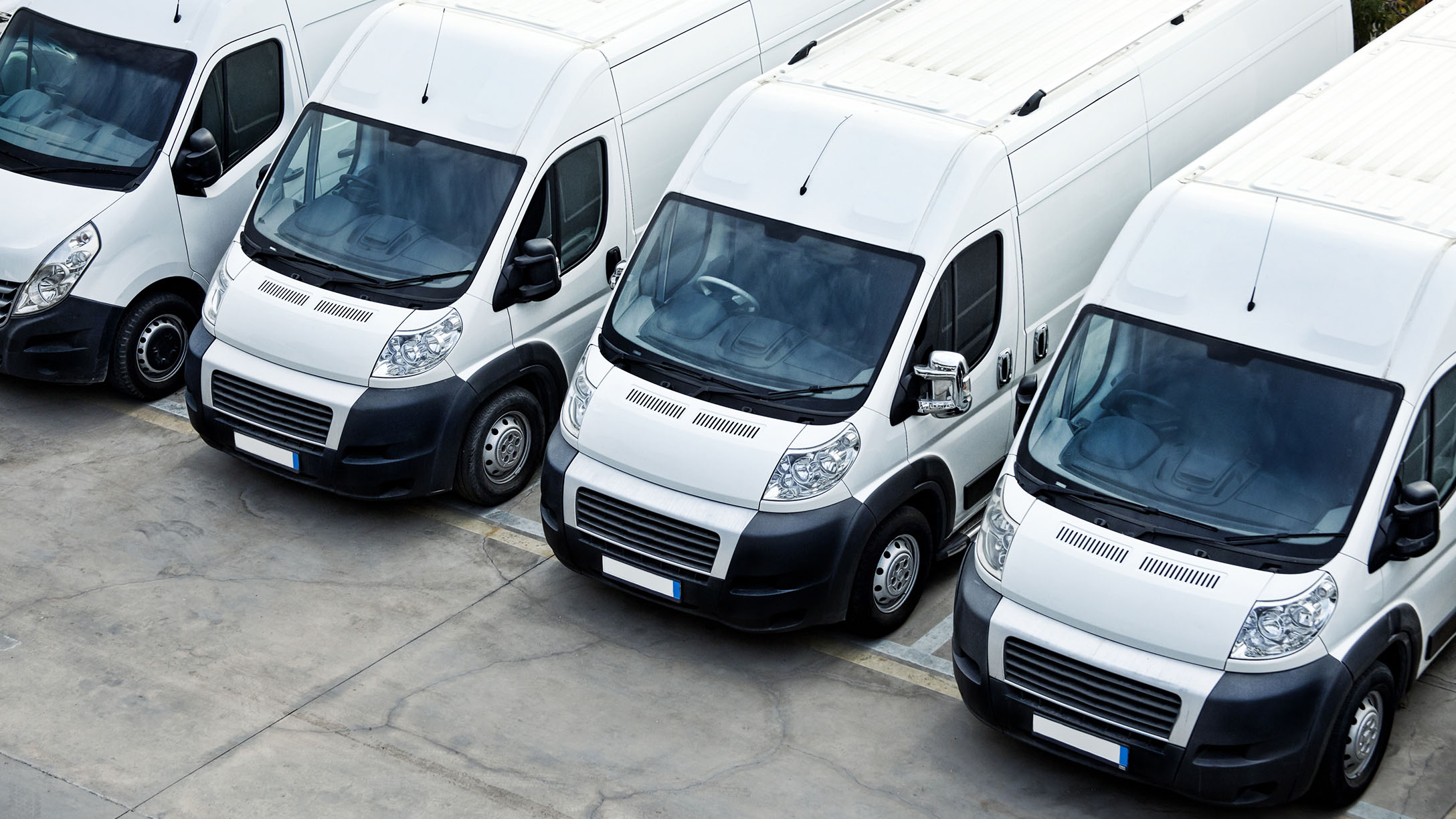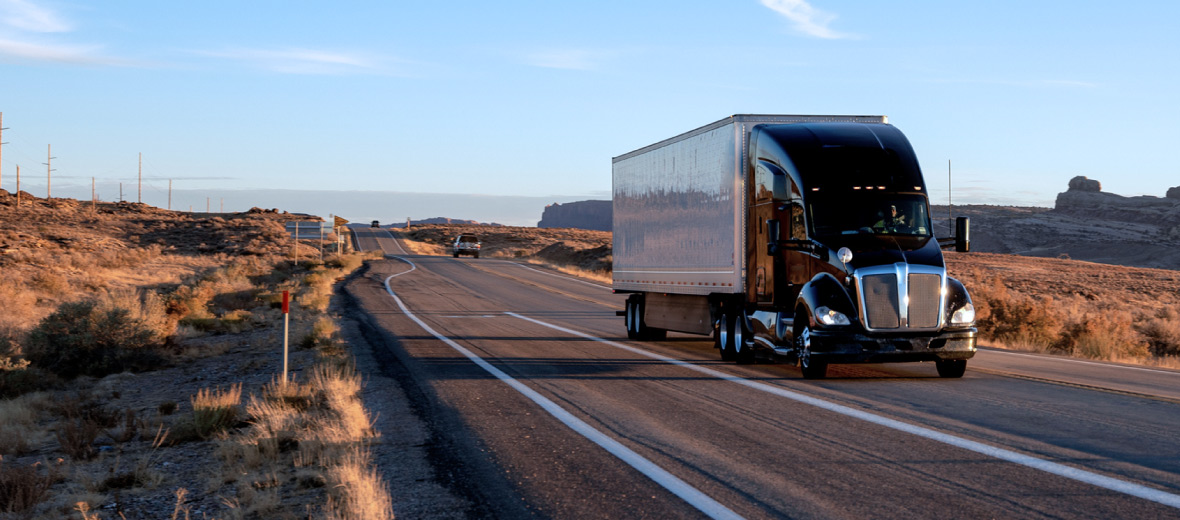Fleet leasing: The pros and cons
Thinking about leasing your fleet vehicles? We’ll walk you through the pros and cons of fleet vehicle leasing to see if it’s right for you.


No matter what kind of business you own, sourcing fleet vehicles for your sales team or technicians can be expensive. Asking employees to drive their personal vehicles to appointments is an option, but often turns out to be a headache for both you and them. On top of that, having your team drive similar, well-maintained vehicles helps boost your brand recognition and customer loyalty. How do you make sure you have presentable, reliable transportation to meet your clients and customers?
For most companies, there are two options – purchasing vehicles outright or leasing vehicles. Fleet leasing is an attractive option for companies who don’t want the hassle of dealing with warranties, maintenance costs or replacing vehicles every few years.
Let’s explore the benefits and potential drawbacks of fleet leasing and why it might work for you.
What is fleet leasing?
Fleet vehicle leasing describes a business arrangement in which companies rent vehicles for specific periods and predetermined mileage. It’s an excellent solution for companies that don’t want to worry about maintenance and, in some cases, insurance. Instead, the leasing company generally handles those aspects. At the lease term’s end, businesses can return the vehicles and lease new ones. This gives you access to the latest models with up-to-date safety and efficiency features.
Fleet ownership is precisely what it sounds like. You purchase the vehicles outright with cash on hand, or you finance them over time. Ownership, unlike leasing, gives your business complete control over the cars or trucks, including customization and maintenance schedules.
While fleet ownership can offer long-term cost savings, you might pay more upfront. You’ll also shoulder the responsibilities and costs of fleet maintenance, insurance and eventual resale or disposal.
So, who benefits most from fleet leasing?
Many companies can find good reasons to rent instead of buy. Some of the industries that engage in commercial fleet leasing include but aren’t limited to:
- Delivery services: Delivery services need reliable transportation but may not want to deal with maintenance or the depreciation costs of owning a fleet.
- Sales organizations: Companies with sales teams might prefer leasing to offer their staff reliable, comfortable cars that reflect well on the company.
- Taxi or rideshare companies: These companies put thousands of miles on their cars each month, so leasing can be more cost-effective than ownership when updating their fleets.
- Construction or trade businesses: Trade businesses that lease vehicles can access a wide range of vans and trucks without needing significant upfront investment.
When you decide that fleet leasing is a good fit for your business, you’ll need to determine the type of lease you want to sign. There are two main kinds, open-end and closed-end, each with benefits and drawbacks.
Open-end fleet lease
In an open-end lease – sometimes called a finance lease or equity lease – the lessee, meaning the company who will be getting and using the vehicles, assumes the residual risk of the car. This means that at the term’s end, the lessee is responsible for selling the vehicle and bearing potential losses if its market value is less than the predetermined residual value. The lessee often keeps the profit if the vehicle sells for more than the residual value.
Open-end leases often feature lower lease payments based on the difference between a vehicle’s initial cost and estimated residual value at the lease’s end. Terms and mileage limits are also more flexible, making them a great fit for businesses with varying usage needs.
Companies that commonly benefit the most from open-end leases include those with high mileage needs or that typically modify their vehicles for specific uses. If your organization also has unpredictable vehicle usage, the flexibility of an open-end lease may be appealing.
Many open-end leases end after one year, although companies may retain an option for month-to-month leasing afterward.
If there’s a downside to an open-end lease, it’s that you assume greater financial risk thanks to residual value changes. You might want a closed-end lease if you lack a strong understanding of resale markets and vehicle fleet management.
Closed-end fleet leases
Closed-end leases are sometimes called “walk away leases” or “retail leases.” This type of lease often provides more predictability than open-end leases.
In a closed-end lease, the lessor – meaning the lease provider – assumes the vehicle’s residual risk. At the end of the lease term, the lessee returns the vehicle and walks away without worrying about potential depreciation or selling the vehicle. The vehicle’s residual value is set at the lease’s beginning.
Closed-end leases typically feature higher payments based on the difference between the vehicle’s initial cost and its predetermined residual value. Lease terms and mileage limits are fixed, and you may have to pay penalties for excessive wear and tear or if you exceed the agreed mileage. You might expect a closed-end lease to last for at least three years, potentially longer.
Closed-end leases usually benefit companies with predictable vehicle usage that want to minimize their financial risk. They’re also a fantastic fit for companies that regularly upgrade their fleets every few years.
Benefits and drawbacks of fleet leasing
What does car or truck fleet leasing look like in practice? Like any business decision, there are plenty of benefits and drawbacks. Before you decide, consider the pros and cons.
Benefits of fleet leasing
- Cost savings: Leasing a fleet often requires less initial capital than buying vehicles outright. The predictable monthly payments can also help with budgeting and cash flow management.
- Maintenance and repairs: Many lease agreements include maintenance and repair services. This not only helps to make sure the vehicles are always in good working condition, but it also reduces the time and resources the company needs to spend on vehicle upkeep.
- Scalability: Enterprise fleet leasing allows businesses to easily adjust their fleet size based on current needs. If the company grows or contracts, it can add or remove vehicles from the lease accordingly.
- Tax benefits: Lease payments are often tax-deductible as a business expense, which can provide significant savings.
- Access to latest technology: Leasing allows companies to regularly update their fleet with the latest vehicle models, featuring the newest safety, fuel efficiency and technology advancements.
Drawbacks of fleet leasing
- Limited ownership: With leasing, the company never actually owns the vehicles. This might limit the company's ability to customize the vehicles to their specific needs.
- Mileage restrictions: Many lease agreements include mileage limits, with penalties for exceeding these limits. Businesses that use their vehicles heavily might find these restrictions problematic, especially if they quickly outpace their suggested annual limits.
- Lease terms: Lease agreements often come with strict terms and conditions. Early termination of the lease, for example, can result in hefty penalties.
The process of fleet leasing
What does commercial fleet leasing look like from a practical perspective?
It’s not a complicated process, but be aware of some vital steps. Because leasing your fleet is likely a major cost of doing business, you should approach it with forethought and careful consideration. A simplified overview of this process looks like this:
- Research and selection: The first step is researching vehicle fleet leasing companies. Look for a reputable company offering comprehensive services and a track record of dealing successfully with businesses in the same industry as yours.
- Vehicle selection: Next, you must decide on the type and number of vehicles you want to lease. Consider factors such as the purpose of your fleet, the expected mileage, fuel efficiency and any specific features or technologies important for your business.
- Cost considerations: Determine your budget for the lease. This includes the monthly lease payments and additional costs like insurance, maintenance and potential penalties for excessive wear and tear or mileage.
- Negotiating terms: Once you’ve selected your vehicles, the next step is negotiating the lease terms with the leasing company. This includes the length of the lease, the mileage limit and the conditions for maintenance and repairs.
- Reviewing the agreement: Before signing the lease agreement, review it carefully to make sure it aligns with what you discussed during the negotiations. Make sure you understand all the terms and conditions, including what happens at the end of the lease and your obligations regarding vehicle return.
- Signing the agreement: Once you’re satisfied with the lease terms, the final step is to sign the agreement. Make sure to keep a copy for your records.
- Lease management: After you’ve signed the agreement, the fleet leasing process continues with ongoing lease management. This includes regular communication with the leasing company, keeping track of mileage, scheduling maintenance and repairs, and preparing for the end of the lease.
Managing your leased fleet
Signing a lease isn’t the final step in the process. Now it’s time to manage that leased fleet.
Fleet management is how you control costs, manage productivity and reduce risks. Effectively managing your leased fleet requires careful attention to several key areas. Outside of ensuring your drivers adhere to fleet compliance considerations like safety and Department of Transportation (DOT) regulations, you’ll also need to stay on top of the following details:
- Staying within warranty for maintenance: One of the benefits of leasing is taking advantage of a manufacturer’s warranty, which covers certain repairs and maintenance. Know what the warranty covers and follow the recommended maintenance schedule to avoid invalidating it.
- Tracking mileage to avoid penalties: Most lease agreements have mileage limits – if you exceed them you’ll incur hefty fines. Using a Geotab telematics system to track your mileage, you can easily stay within the agreed limits. Reviewing your data can help identify any necessary adjustments to vehicle usage or your lease agreement.
- Vehicle condition: Lessees are usually responsible for any damage beyond “normal wear and tear.” Know what this means according to your lease agreement to avoid unexpected charges.
- Insurance: Leased vehicles need to be adequately insured. Be aware of insurance requirements in your lease agreement and make sure your policy complies.
- End-of-lease options: Consider your options as your lease term’s end approaches. This always depends on the type of lease you have. You may need to find a new buyer, return the vehicle or extend the lease.
- Regular communication with the leasing company: Finally, don’t forget to keep an open line of communication with the leasing company. They can provide valuable advice and assistance if you have questions about the contract.
Successful management of a leased fleet involves careful tracking, adherence to lease terms and proactive planning for the end of the lease. Understanding all the terms and conditions of your lease agreement and communicating regularly with your leasing company will help make sure you're getting the most out of your lease.
FAQs about fleet leasing
What is a fleet lease vehicle?
A fleet lease vehicle is a vehicle that is part of a group of motor vehicles owned and managed as a single entity. Companies often lease these vehicles from a fleet management or vehicle leasing company rather than purchasing them outright.
How do I lease a fleet of cars?
Browse manufacturer websites to view different cars, pricing and leasing options. Consider the vehicles’ purpose, expected mileage, fleet fuel efficiency and other features your business needs.
Contact the manufacturer or vehicle fleet leasing company to ask questions. Discuss your needs and budget. They’ll help you decide on the type of lease you need, either an open-end fleet lease or closed-end. Negotiate the terms and sign the agreement. Once you have your fleet in hand, manage it with the help of a solutions partner like Geotab.
How does fleet leasing work?
Leasing fleet vehicles involves renting multiple vehicles from a company for a specified period and an agreed mileage limit. Companies that lease their fleets typically do so under an open-end agreement that allows the lessee to sell the vehicle after the lease term or a closed-end lease that requires the lessee to return the vehicle, extend the lease or purchase the vehicle outright.
Is fleet leasing right for you?
Ultimately, whether to purchase your fleet outright or lease it from a third party depends mainly on your business’s unique needs, budget constraints and whether you’re comfortable relying on assets you don’t own.
Truck fleet leasing can be a significant way to cut costs, especially regarding maintenance and repairs. It’s also attractive for companies that want new vehicles with the latest features every few years.
No matter how you plan to build your vehicle fleet, it’s important to use the right tools to manage it – from mileage monitoring to fuel efficiency – and boost your fleet’s safety and fleet productivity with Geotab’s industry-leading fleet management solutions.
Subscribe to get industry tips and insights

Christine is the Content Manager for the Geotab Marketplace.
Table of Contents
Subscribe to get industry tips and insights
Related posts

What is government fleet management software and how is it used?
April 10, 2025
3 minute read

Beyond the road: Enhancing school bus interior safety with advanced technology
April 10, 2025
5 minute read

60+ trucking industry statistics: trends + outlook for 2025
April 8, 2025
6 minute read

Enhancing student bus safety: Combating distracted driving in the digital age
April 7, 2025
6 minute read

How a well-built fleet safety culture prevents legal trouble
March 28, 2025
5 minute read
